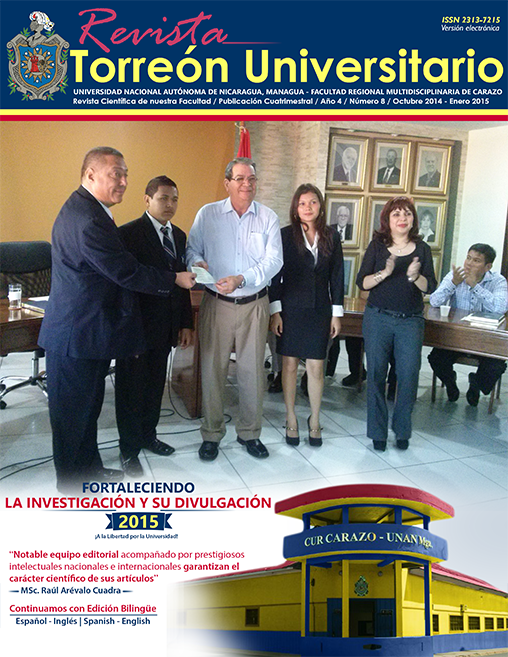El Güegüense: factor cultural para la reconstrucción de la Identidad Nacional
Resumen
En enero de cada año, durante las festividades religiosas de la ciudad de Diriamba, distintos grupos de promesantes representan la obra El Güegüense en honor a San Sebastián, su santo patrono. En los parlamentos de la obra hacen referencia a los conflictos y contradicciones del sistema colonial, específicamente entre los vencedores (españoles) y los vencidos (mestizos – indígenas). La obra gira en torno a los impuestos que asfixian a la población que no tiene ni qué comer, pero Tastuanes – el gobernador – culpa a El Güegüense (viejo mercader) por esta situación y lo manda a traer con el Alguacil mayor, su fiel servidor. El Güegüense, con su ingenio tergiversa las palabras del gobernador hasta convertirlas en insulto y logra no solo evadir los impuestos, sino además, cazar a su hijo mayor – Forsico – con la hija del gobernador Tastuanes: Suche-Malinche.
El 25 de noviembre de 2005, El Güegüense es declarado por la UNESCO, obra maestra del patrimonio vivo, oral e intangible de la humanidad, debido – entre otras cosas – a que ésta se consagra como un ícono cultural de la nación. Por ejemplo, Jorge Eduardo Arellano, ve reflejado en El Güegüense el producto del ser esencialmente mestizo, con el cual se identifica al nicaragüense por el sincretismo racial y cultural durante la colonia.
Descargas
Descargas
Publicado
Número
Sección
Licencia
The authors who publish in this journal agree to the following terms.
- The author or authors of the articles, essays or research grant the National Autonomous University of Nicaragua, Managua (UNAN-Managua) the editing rights (copyright) of the submitted work, therefore the University has the exclusive right to publish the article for the entire copyright period.
- These copyrights/authors authorize Torreón Universitario Magazine and the University to edit and disseminate/publish the article in said Magazine, including printed and electronic reproduction, storage, retrieval and any other type of publication, and sources of secondary information as services. of summaries and databases, they also empower it to protect the article against unauthorized use for dissemination by printed or electronic media (PDF, HTML, EPUB, XML or others).
License for use of content
The magazine uses the Creative Commons Attribution-NonCommercial-NoDerivs 4.0 International License.
Under this statement:

This journal is licensed under a Creative Commons Attribution-NonCommercial-NoDerivatives 4.0 International License. It can be copied, distributed and transmitted publicly as long as the author and source are cited (Revista Torreón Universitario), it should not be modified or used for any commercial purpose. The full license can be found at http://creativecommons.org/licenses/by-nc-nd/4.0/.



